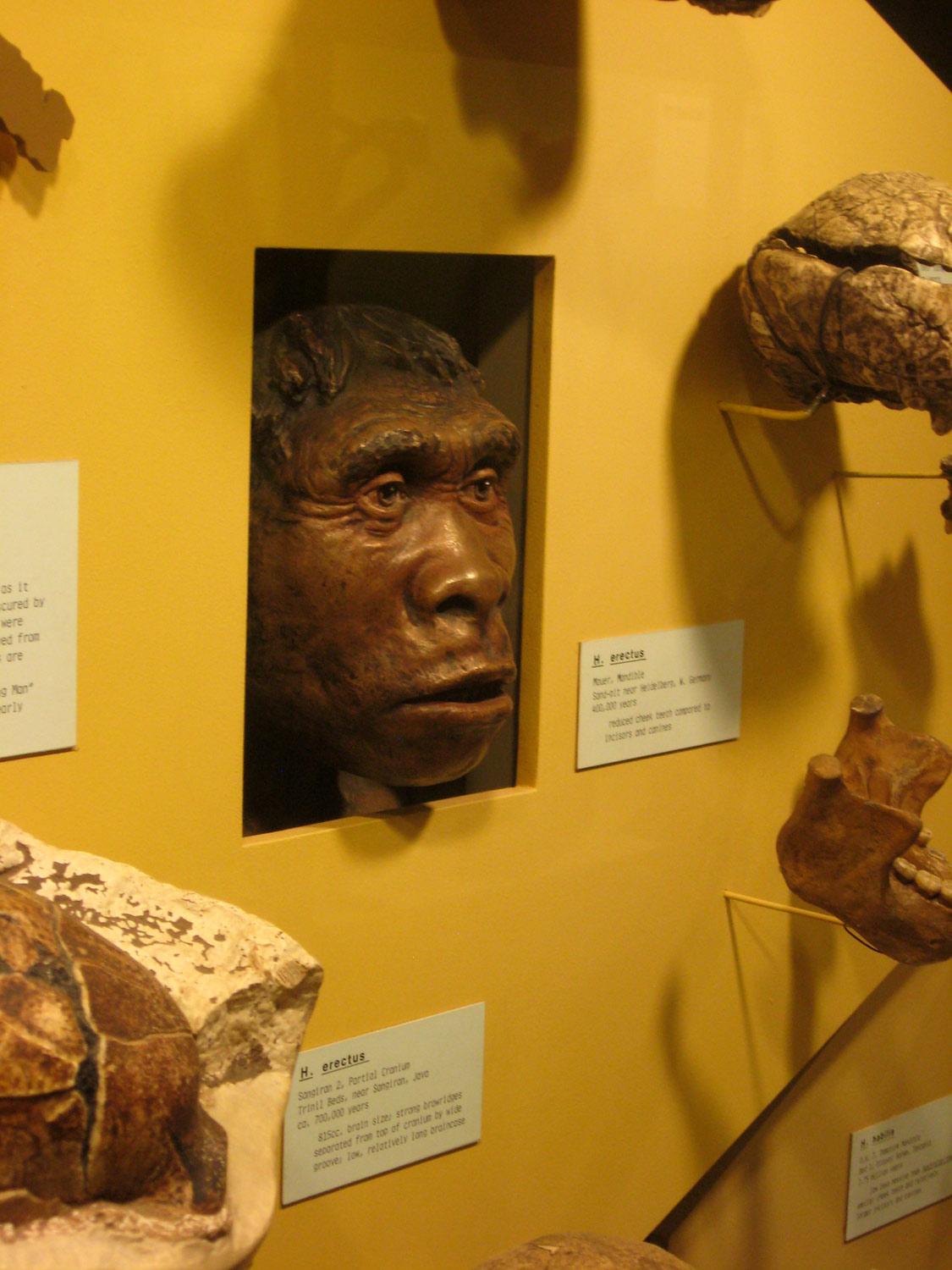How did homo erectus get to remote islands like Crete or Flores without boats? Floating rock from local volcanoes may be the answer.
A recent article proposed a new theory regarding the origin of life on earth. Pumice, a rock formed by volcanic eruptions, can float on the surface of the sea due to its very low density, forming “rafts” ranging in size from small grains to large masses on which plants can grow and people can stand. The article suggested that floating pumice rafts could have accumulated the materials necessary for life in their travels, which were subjected to various natural phenomena such as lightning and solar UV rays, eventually combining into something approximating life. I don’t know the merits of this hypothesis, but it immediately made me think of another mystery uncovered last year in Crete. Tools of the Acheulean type, apparently produced by members of a homo erectus group 130,000 years ago were discovered on that island and, though erectus specimens are attested on the mainland at that time, there seemed to be no way their makers could have got there without some sort of oceangoing capabilities. Building boats, or even rafts, however, was considered beyond their abilities; their known repertoire comprised mainly generic flint tools for cutting, digging or butchering. It’s possible that they did more sophisticated work with organic materials that have not survived, but the dexterity and planning required for boatbuilding sounds rather out of their reach.
A similar conundrum concerns the so-called hobbits (homo floresiensis) of Flores Island in Indonesia. These are generally (though not universally) considered to be some type of homo erectus, stranded on the island and shrinking over time due to the limited resources available to them. But how did they get there? Other erectus remains in, for example, Java can be explained by the fact that those islands were connected to the mainland at the time. But Flores is across the Wallace Line, which divides the flora and fauna of Asia from the very different ones of Australasia, and was never in that period connected to anything west of it.
I think those pumice rafts may hold a clue. One thing the Indonesian archipelago and the Aegean Sea have in common is volcanoes, some of the most powerful in the world. The 1883 eruption of Krakatoa sent pumice rafts as far as Africa, and floating pumice is common today as a result of the frequent activity of the many volcanoes all through that area. In the eastern Mediterranean, the massive eruption on Thera in around 1600 BC wiped out the Minoan civilization and may have spawned the legend of Atlantis, and both it and a similar event on the island of Kos in about 160,000 BC produced masses of pumice over the sea which can still be identified today on the surrounding shorelines. The latter event seems to fit with the age of the Cretan tools. It has been suggested that the distinctive plants and animals across the Wallace Line were originally carried there at least partly by pumice rafts, and I suggest that the homones erecti in question may have been affected by such eruptions, perhaps washed or sucked out to sea, finding refuge on one of these rafts, and eventually ending up somewhere they logically had no place being. It makes more sense than building rafts to go someplace they had no reason to go.


April 29, 2021 at 8:17 pm
There are a number of research papers which state the same possibility. As recalled one mentioning pumice was:
“If Australia was colonized
successfully by people on
drifting rafts, there must
have been some pretty large
losses.”
Jane Balme. 2013. Of Boats
and string: The maritime
colonization of Australia.
Quaternary International
285: 68–75.
And now there is another case, in that a Homo Luzonensis has been found on the island of Luzon, dating back at least about 700,000 years ago. These findings were released in 2019, and since the island is believed to never have been an all dry land approach, at least since those dates, there is the dilemma of how they got there. Pumice rafting is one of the few possibilities, particularly in that the distances are not great.
Enough so like the Flores migration they could have walked during some or all the island hopping. The other rafting potentials are vegetative (e.g. mangrove or other dislodged, particularly during sea level rapid rises of more than 1 meter per century); animal, such as globster, regular whale carcass, or megafaunal; ice floe in coldest regions; rare ‘asphalt volcano’ break offs, and pumice rafts. Most of those are ephemeral in weeks if not days existence, yet potentially months or years. Dispersal rafting is a well established biological method.
There are also the Oreopithecus of Italy, believed to have then been an island, getting to said island some 9 million years ago, 7 million year ago Crete just before the Messenian Event with the recently found footprints, and monkeys to South America circa 30 million years ago (a long drift, even with island chains now subsided into seamounts).
The plot thickens of our former world. In the case of hominids, it is very possible they could get back to the point of origination and tell of the route, dangers and methods to transport. In that case, the original method might be involuntary rafting of some sort, later expanding to a variety of strategies including opportunistic rafting as the circumstances arise. Pigs and elephants also got to the Flores, and both are sometimes observed swimming long distances to reach isolated islands.